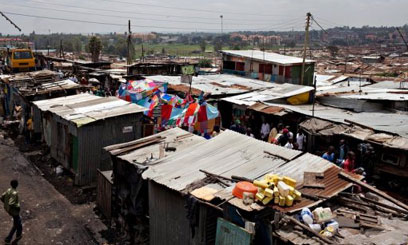Speaking ahead of the launch of the State of World Population 2011, Ben Obonyo from the Population Studies and Research Institute said the high number of unemployed youths pose a danger to national security.
“We have heard of cartels in urban slums where gangs have literally taken over governance in those areas; they impose taxes, fees for security… you saw a glimpse of this during the post election violence,” he asserted.
Despite the youth being the majority in Kenya, Obonyo felt that they remain the most marginalised in the social, economic and political arena.
The United Nations Population Fund (UNFPA) estimates that 54 percent of Kenya’s population is below 15 years while those between 15 and 36 years are about 36 percent of the total population.
The estimates also indicated that Kenya’s population was growing by one million every year.
UNFPA Country Director Fidelis Zamachi said the high population projections presented both opportunities and challenges as he believed it depended on how stakeholders will handle it.
He said the high numbers of the productive youth presented an opportunity where their energies can be utilised for productivity and development of the country.
Zamachi also called for collective strategies that will address issues of poverty by improving the social welfare of the people.
Challenges of increased urbanisation were also pointers of increased informal settlements in urban areas with projections that by 2040 nearly half of Kenya’s population will be living in urban areas.
According to the report, though there was a decline in child and maternal mortality, one out of every 14 children was dying per year before their fifth birthday while 7,500 women were dying per year while giving birth.
Obonyo noted that the highest child/maternal deaths were more common among the poor who could either not access medical facilities, preferred traditional birth attendants or simply gave birth at home.
Planning, National Development and Vision 2030 Permanent Secretary Edward Sambili said the high population growth rate had surpassed the economic development which posed a challenge for the country.
“Kenya is one of the countries where population growth has in many years surpassed economic growth, while for sustainable economic development, economic growth rate must be three times the population growth rate,” he said.
He said the key intervention would be family planning by ensuring services are provided across the country.
Use of contraceptives was also an interest area highlighted in the report and it showed that 26 percent of every 1,000 women had unmet needs of family planning especially in the rural areas.
The report stressed on the importance of planning families to ensure that people are getting the number of children they can take care of.
Previously, five was the number of children agreed upon, but now three children are what stakeholders in population matters think people should get.
However, the number of unplanned babies is still high in Kenya with 1.8 women said to be having unplanned babies every year.










































